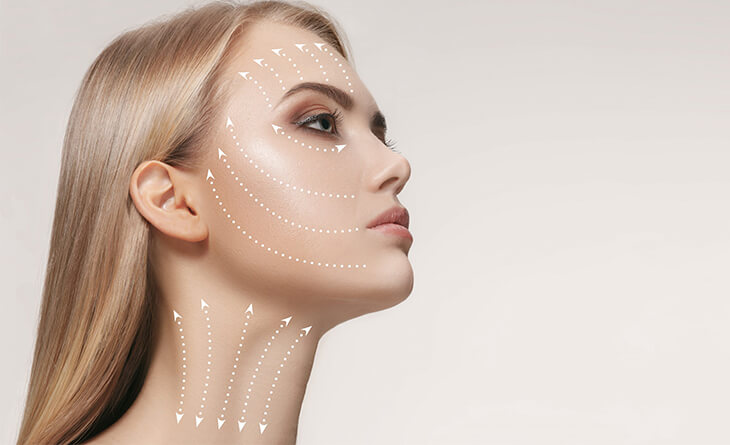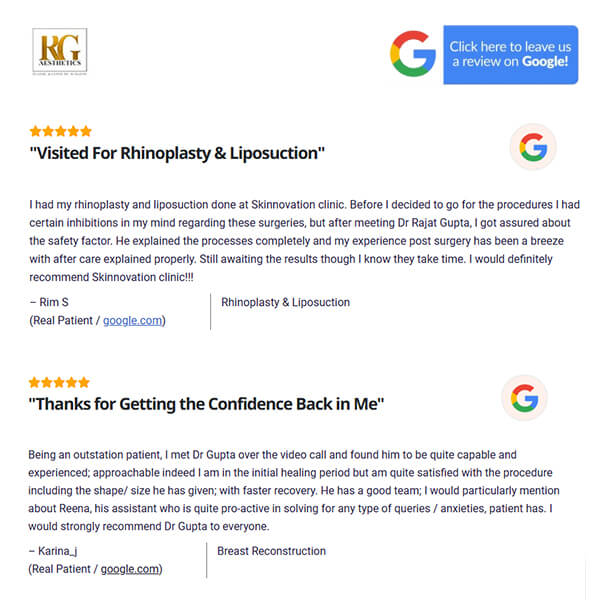All You Need to Know About Getting a Surgical Facelift in Delhi
Understanding the extent of the effects of age on the body can never stop. While your health may suffer, and you may be more susceptible to weight gain, these factors can be controlled. Regular exercise and eating healthy ensures you stay healthy and fit.
Something that cannot be controlled, however, are signs like sagging skin. Where do these features show up first? If you guessed the face, you guessed correctly.
Why does the face show signs of ageing first?
The face is the most exposed part of our body. Every other part can be covered under clothing of some form. But the face cannot. You cannot spend your entire life hiding your face. It is also the way people recognise you. You must have heard the saying “I never forget a face”. There is a reason it exists – even if they forget your name, your face stays imprinted in their mind permanently.
This is also why you sometimes dream about people you do not know. Your brain stores their appearance, even if it does not have a label (i.e. a name) to go with the appearance. This simply proves how exposed the face is.
That said, the face and the facial skin is also one of the most sensitive parts of the body. With 42 muscles in the face continually working to enable expression and communication, the face goes through a lot of exercise. It simultaneously bears the brunt of weather changes and any other environmental changes.
This takes a toll on it. It laxes and the skin loses its elasticity. This happens alongside the natural ageing process. The fat in your face may also descend, creating a very haggard look as a result. Such results have established the reason for one of the most popular cosmetic surgery procedures today: the facelift.

Have questions or want to get started? We are ready to help you with a smile!
What is a facelift?
A facelift is a cosmetic surgery that improves visible signs of ageing in the face and neck. It restores the beautiful bone structure to the ageing jaw, cheeks, and neck.
The best candidate for a facelift is one with a well-defined bone structure, but whose face and skin are slack and sagging due to age or extreme weight loss. They must also be healthy and a non-smoker. Only then do they get the optimum results.
Facelift’s Bad Reputation
A lot of people associate the facelift with unnaturally tight-looking skin; downright odd results that do not suit the patient at all.
The problem with such a perception is that it is a major turn-off for people who may actually benefit from the procedure. A single negative result has a higher likelihood of trending and getting imprinted in everyone’s mind. It becomes their point of association about a facelift.
But such results are very easily avoidable. As long as you keep your standards high, you can get excellent results from your facelift in Delhi. What kind of results?
The goal of a facelift is to tighten the structures in your face so that you regain your youthful glow. However, this must always be done while keeping in mind the potential results. The face should not look stretched or unnatural. It needs to be very appealing and only enhance and clearly show the contours in the face.
How is the facelift achieved?
We are going to give you a small spoiler about the ideal facelift procedure: the facial muscles are the secret ingredient.
As we established, a facelift is about tightening the facial structures. Now, you may think that this involves tightening the skin itself. But that is not the case at all. When choosing a surgeon, you should always choose someone who does not tighten the skin. Instead, they should focus on the underlying SMAS layer.
What is SMAS?
Superficial muscular aponeurotic system or SMAS is the area of musculature that lies right under the facial skin. This is what loosens and requires tightening. While there may also be excess skin, that is simply a symptom. It is not the cause.
The SMAS is the cause of a lax and sagging face. This means it requires more focus than any other facial structure. Therefore, an excellent surgeon focuses on this layer rather than the skin.
So, now the next question would be – what makes an excellent surgeon?
Choosing Your Surgeon
There are several aspects to focus on when determining who can give you the best results from your facelift in Delhi. These include the following factors:
Expertise
First and foremost, the surgeon’s expertise matters. Does your surgeon of choice have board certification? Do they understand the demands of the surgery? Are they honest with you about the kinds of results you can expect? What kind of reviews or testimonials do they have?
This kind of in-depth vetting process ensures that you keep your standards high. These determine who is best qualified to perform your surgery.
Centre
Your surgeon’s operating centre also matters. If they seem to have all the necessary knowledge but do not take the initiative to get access to the essential equipment, you will not get the high-quality results you deserve. Better patient care means reduced trauma and faster recovery time. These are all determined by the centre your surgeon uses.
Techniques
We already discussed one technique: the tightening of the SMAS. Tightening the SMAS and allowing the skin to just drape over the newly tightened structure gives you better results. The surgeon can also determine how much excess skin they need to remove, if necessary.
Such measures automatically give you far better results. Additionally, you get a more reliable recovery deadline where you hit your recovery milestones as laid out by your surgeon.
While it is true that maintaining high standards may increase the cost of facelift surgery, this is but a small price to pay for the kind of results you get. Your face is your primary identifier, and you need to keep it this way.
You must also understand that these factors alone do not determine the price of your facelift in Delhi. Before any other determinant, the price is based on the kind of facelift you opt for. Well, it is more about the type of facelift you need.
What does this mean?
The Different Types of Facelift Surgery
The different types of facelift include:
- A full facelift
- A mini facelift
- A face and neck lift
- An eyebrow lift
- A forehead lift
These options can be very confusing, especially to someone who is not well-versed in the technical terms surrounding the facelift. So we are going to explain each procedure to you in-depth. But before we begin with that, we also need to understand the face and its structures.
Understanding Facial Anatomy
In your face, there are essentially four layers:
- The innermost skeletal bone
- The muscle lying over the bone
- The fat lying over the muscle
- The skin lying on top – the top-most layer
Nerves and vessels are distributed between all these layers. There are also several tissues and ligaments connecting the bone to the SMAS layer (the superficial layer of muscles), which in turn connects to the skin via the same tissues.
Ageing causes the relaxing of these ligaments. Such relaxation makes them fall downwards, pulling the skin with them. This results in the sagging skin. Along with this, you may also experience fat atrophy.
Fat atrophy is when the fat decreases in certain areas of the face. This is also easily corrected through fat grafting, which contributes to the aesthetic and natural-looking final result.
What is Fat Grafting?
Fat grafting is the process of harvesting fat from one part of the body and inserting it into another part. This is done through liposuction. Using the latest power-assisted and ultrasound-assisted liposuction methods ensures minimal trauma to the extracted fat. This means that a much larger volume of fat can be collected and treating.
Adding this to the facelift surgery is very safe. Since the fat comes from your body, there is no chance of rejection, and it is easily absorbed and kept in place. This contributes to the naturalness of the final result that tightening the SMAS layer achieves.
Combining fat grafting with the facelift procedure, therefore, ensures that the results look very natural. Since both procedures are performed in accordance with the natural contours of your face and bone structure, there is no chance of forcing any results that would not look natural.
So, let us now discuss the procedure.

Facelift – The Procedure
As established, there is no single type of facelift. Similarly, there is no unique approach. When it comes to tightening the SMAS muscles, there are three approaches that your surgeon might use.
SMAS Plication
This is a very common procedure where your surgeon sutures the SMAS from one edge to the other. Essentially, they make lines at the edges of the SMAS and then connect these lines. This automatically creates a lifting effect.
This procedure requires no removal of muscle. Therefore, the volume of the face remains intact, continuing to work with the natural contours.
SMAS Ectomy
This approach is preferred for patients who have bulky faces. In such patients, the goal is also to remove bulk. Therefore, during a SMAS ectomy, a portion of the SMAS is removed between 2 lines. Then these lines and joined, automatically causing a lift due to the tightness.
It also ensures that the face looks thinner and more proportionate – the goal of any facelift in Delhi.
MACS Lift
The final approach is the MACS lift or the Minimal Access Cranial Suspension technique. Here, a loop is created with a suture which goes through the SMAS. It lifts the SMAS and pulls it while connecting to the temporal fascia.
This approach is similar to the logic of hanging a rope for a clothesline or a hammock. You need to loop the rope over a nail and pull it so that it rises off the ground. Similarly, a MACS lift is pulled up and lifts the SMAS with it.
Depending on your needs, your surgeon uses one of these approaches in the facelift. The kind of facelift you get is primarily determined by the kind of incisions and the area of the face the lift targets. So let us now discuss the different approaches to the facelift procedure.
The Mini Facelift
Understanding the mini facelift is crucial before understanding related procedures.
A mini facelift is a facelift that focuses on the lower half of your face. The incisions are kept very inconspicuous since they follow the natural contour of the ears. The incision is therefore made along with the ear, from top to bottom.
Through this, the SMAS layer is tightened, the skin is left to drape over it, looking very nice and natural.
Following a mini facelift, the patient can go home on the same day resume normal daily activities from the 3rd day after surgery. Patients might experience minor swelling, bruising, redness and loss of sensation. This subsides within a few days. That said, it may take up to a year before final results are apparent.
The Forehead and Eyebrow Lifts
In both these cases, the incision from the mini facelift is extended upwards, into the hairline. Through this, the brow is lifted, and the forehead is rejuvenated. Worry lines and other signs of ageing get erased in this method. This may also be done through the endoscopic method where your surgeon uses a small camera to determine how to go about the tightening. This measure offers greater precision.
A specific hairline technique has also been developed for people with a receding hairline. Here, your surgeon removes a small amount of skin and tissue from the top of your forehead. This ensures that the hairline stays in place.
When a forehead lift is combined with a mini lift in the classical method, it is called a full facelift or a classical facelift. Similarly, when it is combined with the mini facelift using the camera, it is called an endoscopic facelift.
Face and Neck Lift
In some cases, another significant sign of ageing is the band of platysma visible on the neck. This can look like a turkey neck – as it is colloquially known, and requires a neck lift along with a facelift.
In this case, the incisions of the mini facelift extend downwards and backwards. This way, the resulting scars stay well-hidden along the contours and at the back of the head. From here, your surgeon corrects this.
A neck lift is done through platysma plication. This procedure involves tightening the platysma muscle and removing any excess skin. This procedure also has two approaches – lateral platysma plication and platysma band plication.
Lateral platysma plication is achieved when the incisions are at the back. Meanwhile, platysma band plication involves targeting the central band of the platysma that looks very unappealing. Here, the incisions are made on the sides and bottom of the neck. This allows for inconspicuous entry points through which the platysma muscles can be tightened.
Tightening Loose Ends (Pun Intended)
Wrapping up, we will again impress upon you the importance of finding a surgeon with knowledge of the necessary technique. If you are still wondering why the skin cannot be tightened, this is because the results look very unnatural. The face looks blown out and awkward, a look which can make you look like a caricature of yourself.
Knowing which muscles to tighten, how much lift is required, and which particular SMAS-related technique is needed for the best results, are all aspects your surgeon should be well versed in. This is the only way you get the results you deserve. The facelift needs to happen along your natural contours, too, for the ideal results.
In conclusion, a facelift in Delhi is an excellent way of rejuvenating your face. The recovery is painless with only some mild tightness as discomfort. Any pain is easily managed with painkillers, and you can return to society quickly. You see your results immediately, and they only get better with time as the swelling goes down.
Get a Board-Certified Facelift in Delhi
At RG Aesthetics, Dr Rajat Gupta is our board-certified expert plastic surgeon. With extensive knowledge in cosmetic and reconstructive procedures, he ensures that all his patients get the results they deserve. He understands the kind of emotional burden ageing can cause and accounts for it by always following the patient’s natural contours. Additionally, he adheres to international standards of patient care, ensuring a much better and more comfortable recovery. He is always honest with his patients about what results to expect, keeping their expectations realistic and yet exceeding them at every turn!
Dr. Rajat Gupta
MBBS, MS, DNB(Gen. Surg.),
DNB (Plastic Surgery)
Dr. Rajat Gupta is a board certified plastic surgeon in India with 10 years of experience to back his expertise in the domain of aesthetic surgeries.
Having completed his training from Maulana Azad Medical College and equipped with a thorough understanding of aesthetic needs of people, Dr. Gupta strives to offer the best remedies and cosmetic procedures outfitted with the latest technology to the aspirants in India and across the globe. To book an appointment, call: +91-9251711711 or email: contact@drrajatgupta.com





